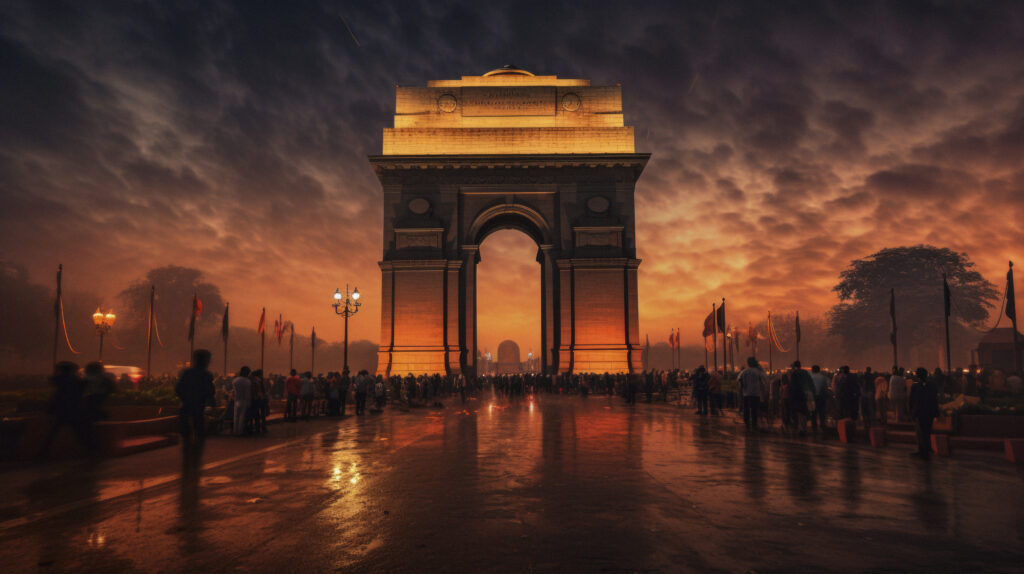India is a destination that captures the imagination of travelers from across the world. Among its many attractions, the golden triangle tour holds a special place. This popular circuit covers Delhi, Agra, and Jaipur, offering a blend of Mughal history, Rajput grandeur, and vibrant modern culture. For first-time visitors to India, the golden triangle tour is often the perfect way to experience the essence of the country.
What is the Golden Triangle Tour?
The golden triangle tour refers to the triangular route connecting Delhi, Agra, and Jaipur on the map. These three cities are not only geographically close but also historically and culturally rich. Together, they present a snapshot of India’s diverse heritage, from ancient monuments and grand palaces to bustling bazaars and colorful traditions.
Travelers can usually complete the golden triangle tour in 5 to 7 days, making it ideal for short vacations or an introductory trip to India.
Highlights of the Golden Triangle Tour
Delhi: The Heart of India
Delhi, the starting point of the golden triangle tour, is a city of contrasts. Old Delhi is filled with Mughal architecture, narrow lanes, and aromatic food stalls, while New Delhi boasts wide roads, modern markets, and colonial landmarks.
Key attractions include:
- Red Fort, a UNESCO World Heritage Site.
- Qutub Minar, the tallest brick minaret in the world.
- Humayun’s Tomb, a precursor to the Taj Mahal.
- India Gate, a national monument.
- Chandni Chowk for traditional markets and street food.
Agra: The City of the Taj Mahal
Agra, the second point of the golden triangle tour, is synonymous with the Taj Mahal, one of the Seven Wonders of the World. Commissioned by Emperor Shah Jahan, this white marble masterpiece is a symbol of eternal love.
Other notable highlights are:
- Agra Fort, once the main residence of the Mughal emperors.
- Mehtab Bagh, a serene garden offering stunning views of the Taj Mahal.
- Fatehpur Sikri, the abandoned Mughal capital located near Agra.
Agra is also well-known for its marble handicrafts and the sweet delicacy called petha.
Jaipur: The Pink City
Jaipur, the final stop in the golden triangle tour, is the capital of Rajasthan and a city that exudes royal charm. Known as the Pink City due to its pink-hued buildings, Jaipur is famous for its forts, palaces, and vibrant culture.
Highlights of Jaipur include:
- Amber Fort, with grand courtyards and scenic views.
- Hawa Mahal, the Palace of Winds with its lattice windows.
- City Palace, showcasing the fusion of Mughal and Rajput architecture.
- Jantar Mantar, a UNESCO-listed astronomical observatory.
- Bustling bazaars selling jewelry, textiles, and handicrafts.
Suggested Itinerary for the Golden Triangle Tour
A typical golden triangle tour follows this route:
Day 1-2: Delhi
Explore Red Fort, Qutub Minar, India Gate, Humayun’s Tomb, and Chandni Chowk.
Day 3: Delhi to Agra
Travel to Agra, visit the Taj Mahal and Agra Fort, and enjoy sunset views from Mehtab Bagh.
Day 4: Agra to Jaipur
On the way to Jaipur, stop at Fatehpur Sikri to admire Mughal architecture.
Day 5-6: Jaipur
Tour Amber Fort, Hawa Mahal, City Palace, and Jantar Mantar, followed by shopping in local bazaars.
Day 7: Return to Delhi
Drive back to Delhi, completing the golden triangle circuit.
Types of Golden Triangle Tours
Different travelers have different preferences, so the golden triangle tour can be customized in several ways:
- Standard Tours: Covering Delhi, Agra, and Jaipur in 5–6 days.
- Luxury Tours: Featuring premium hotels, luxury trains, and private guides.
- Extended Tours: Adding destinations like Ranthambore for wildlife, Varanasi for spirituality, or Udaipur for romance.
- Cultural Tours: Focused on food, festivals, and local traditions.
- Short Tours: Compressed 3–4 day itineraries for business travelers or those with limited time.
Best Time to Take the Golden Triangle Tour
The best time to embark on a golden triangle tour is from October to March. During these months, the weather is cooler and more pleasant for sightseeing. Summers can be extremely hot, particularly in Rajasthan, while the monsoon season brings heavy rains and humidity. Winter offers clear skies and comfortable temperatures, making it the most popular season for tourists.
Why the Golden Triangle Tour is Popular
The golden triangle tour has remained one of the most sought-after travel experiences in India for several reasons:
- Comprehensive Experience: It covers some of India’s most iconic landmarks in one trip.
- Convenience: The cities are well connected by road and rail, making travel smooth and efficient.
- Cultural Diversity: The tour showcases Mughal, Rajput, and colonial heritage.
- Flexibility: Options to extend, customize, or focus on specific interests like food or shopping.
- Value for Money: Packages are available for all budgets, from affordable to luxury.
Travel Tips for the Golden Triangle Tour
- Carry comfortable footwear for walking around forts and palaces.
- Book Taj Mahal tickets in advance, especially during peak season.
- Try local cuisines such as kebabs in Delhi, petha in Agra, and dal baati churma in Jaipur.
- Use licensed guides for accurate historical insights.
- Keep extra time in your itinerary to explore local markets and hidden gems.
Conclusion
The golden triangle tour is more than just a travel route—it is an immersive journey into India’s culture, history, and architecture. From the bustling streets of Delhi to the timeless beauty of the Taj Mahal in Agra and the royal splendor of Jaipur, this tour offers unforgettable experiences at every step. For anyone looking to discover the essence of India in a short span of time, the golden triangle tour remains the perfect choice.



